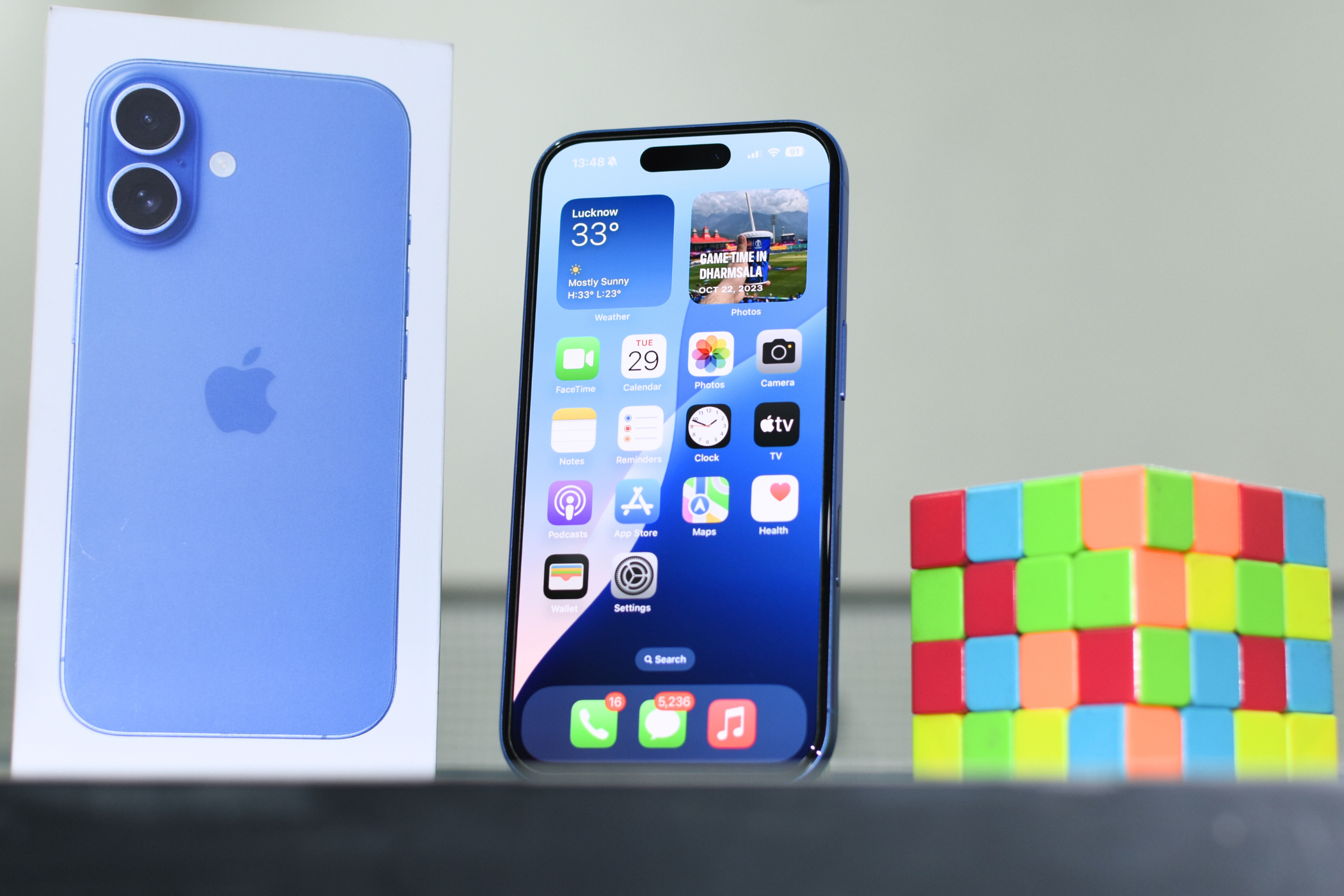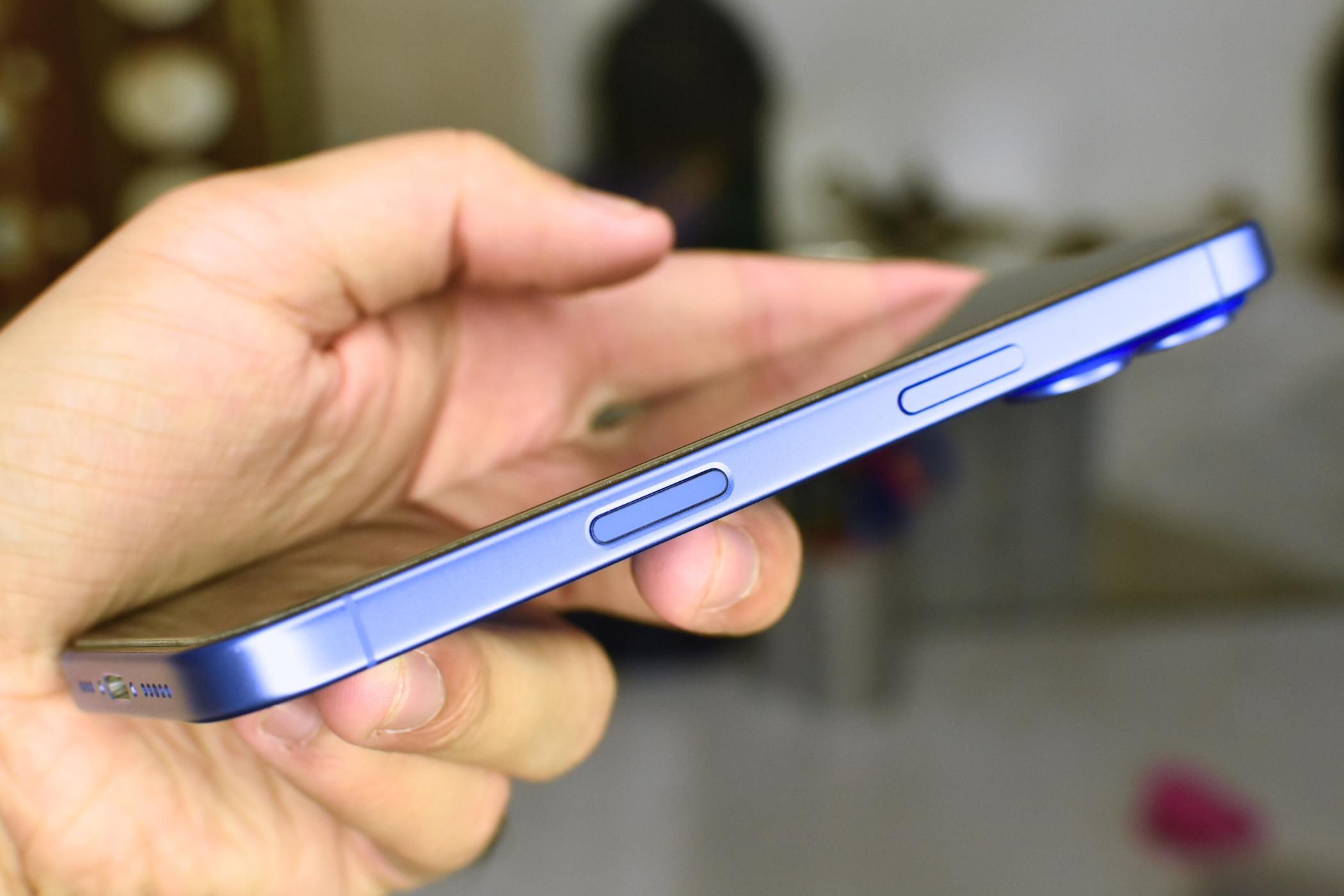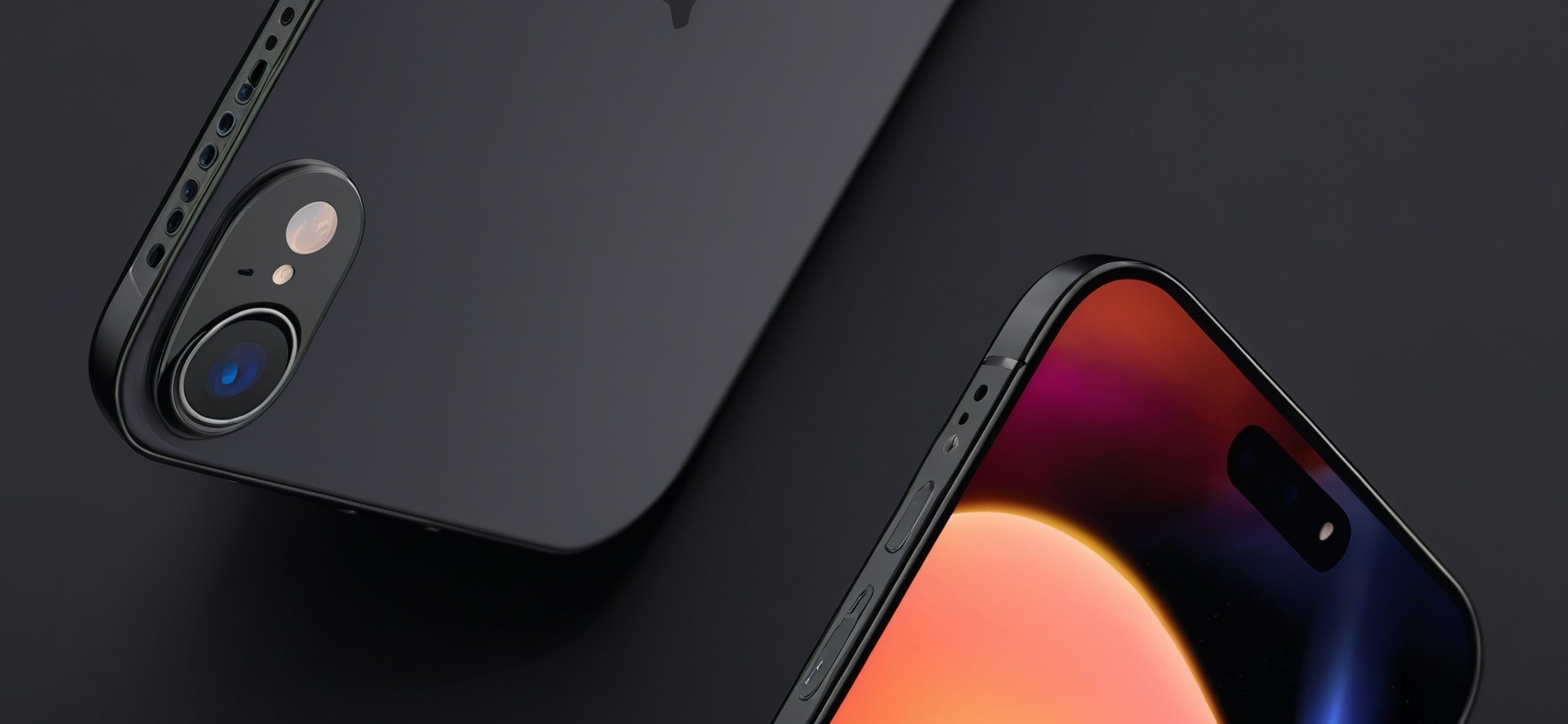When I had my iPhone 13, I always used a protective case because the exterior of the phone didn’t appeal to me at all. However, the iPhone 16, particularly in the Ultramarine finish, is in a league of its own. The textured aluminum frame and matte finish on the back convey a premium feel. The subtly curved edges enhance comfort when holding the phone, making it the closest a standard iPhone has come to feeling like a Pro model.
I appreciate how my thumb rests easily on the side button, with the volume controls and action button positioned perfectly for my fingers. The only time I dropped the phone was while taking photos for this article. It fell screen-first from about five feet (and I’m not that tall), but the Ceramic Shield front held up well, along with the $15 screen protector.
“It’s Easier to Use the iPhone 16 Under Direct Sunlight“

Whenever an enthusiast like me gets a new phone, I typically do one of two things: I either spend hours taking photos with the phone or I spend hours photographing the phone itself. I confess I did both.
After spending a considerable amount of time staring at the display, I noticed that it is significantly brighter than the iPhone 13 — so bright that I didn’t need to set it to maximum brightness, even in direct sunlight.
The 66% increase in maximum brightness is evident whether I’m reading emails on the bus or using the display as a soft light for photography. I also appreciate the ability to fine-tune the brightness, which I often use to scroll through my social media feed and email one last time before bed.
However, I am disappointed that my new flagship smartphone still has a 60Hz refresh rate. It’s frustrating to miss out on a feature that should have become standard for all iPhones by 2024.

I don’t typically game on a smartphone because of the small screen, which makes it difficult to fully appreciate the graphics. However, the iPhone 16’s A18 processor seems to challenge that notion. Apple claims that this chipset can handle AAA video games on the device.
While I couldn’t fully verify that claim, I did spend some time playing popular titles like Call of Duty: Mobile at the highest settings, and the phone handled it effortlessly. It did get a little warm after about 15 to 20 minutes of gameplay, but I didn’t experience any performance drops.
I also edited a couple of videos for a friend’s YouTube channel using basic editing features (like adding on-screen text, transitions, and background music), and I was surprised at how quickly the iPhone 16 rendered them.

I’ve also found that the Camera Control button to take a photo can sometimes cause the frame to move due to the pressure applied to the button. For now, I’ve decided to use the Camera Control button to simply open the camera instead of taking photos.
Interestingly, the iPhone 16 offers a couple of methods to access the camera. You can use the Camera Control button, the lock screen shortcut, the tap shortcut feature on the back, or the action button. That’s four unique methods to launch the camera app on your iPhone – maybe Apple has gone a bit overboard.









